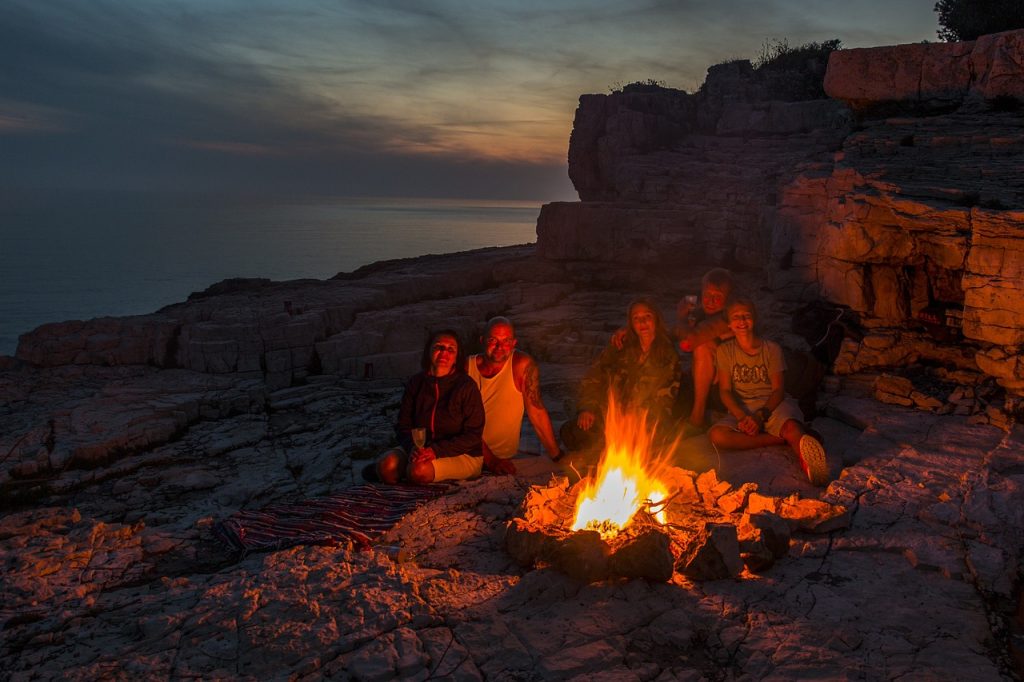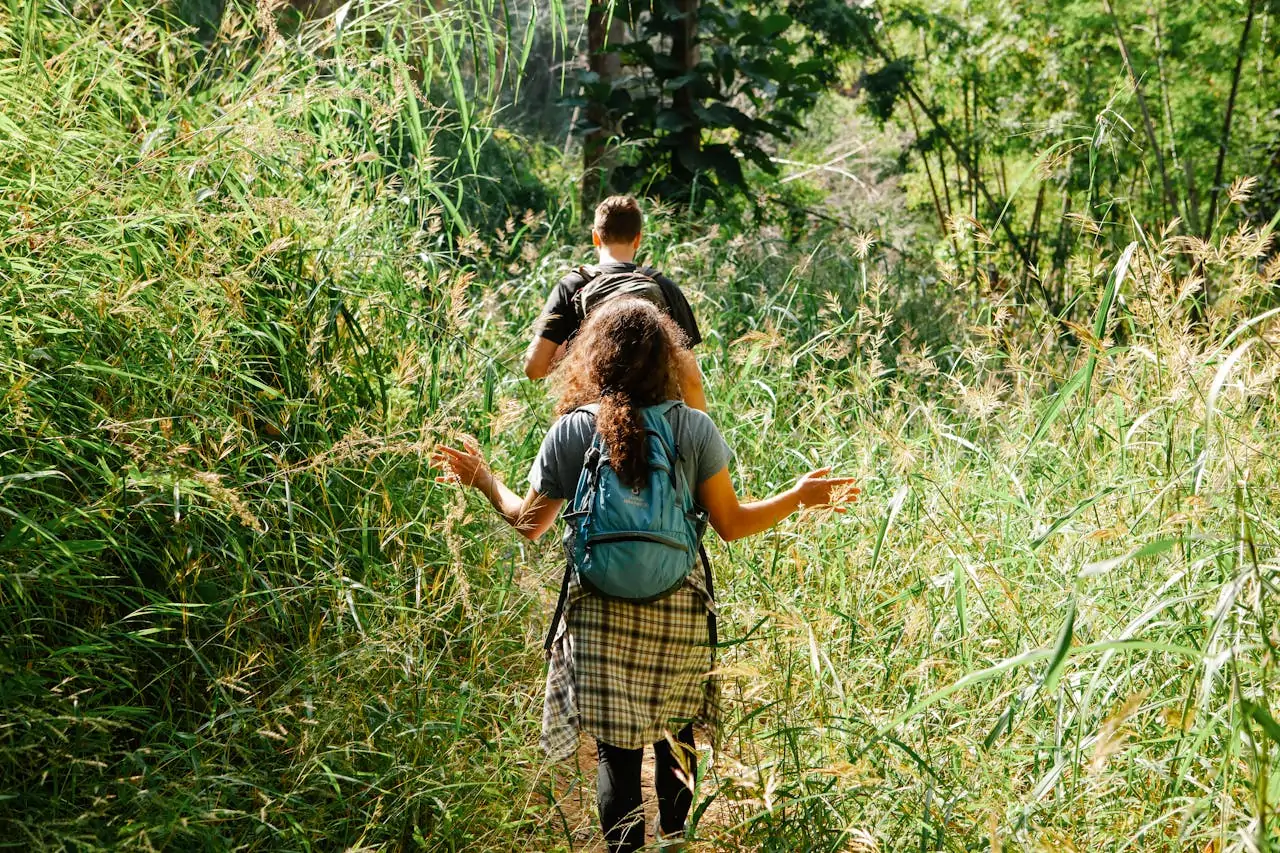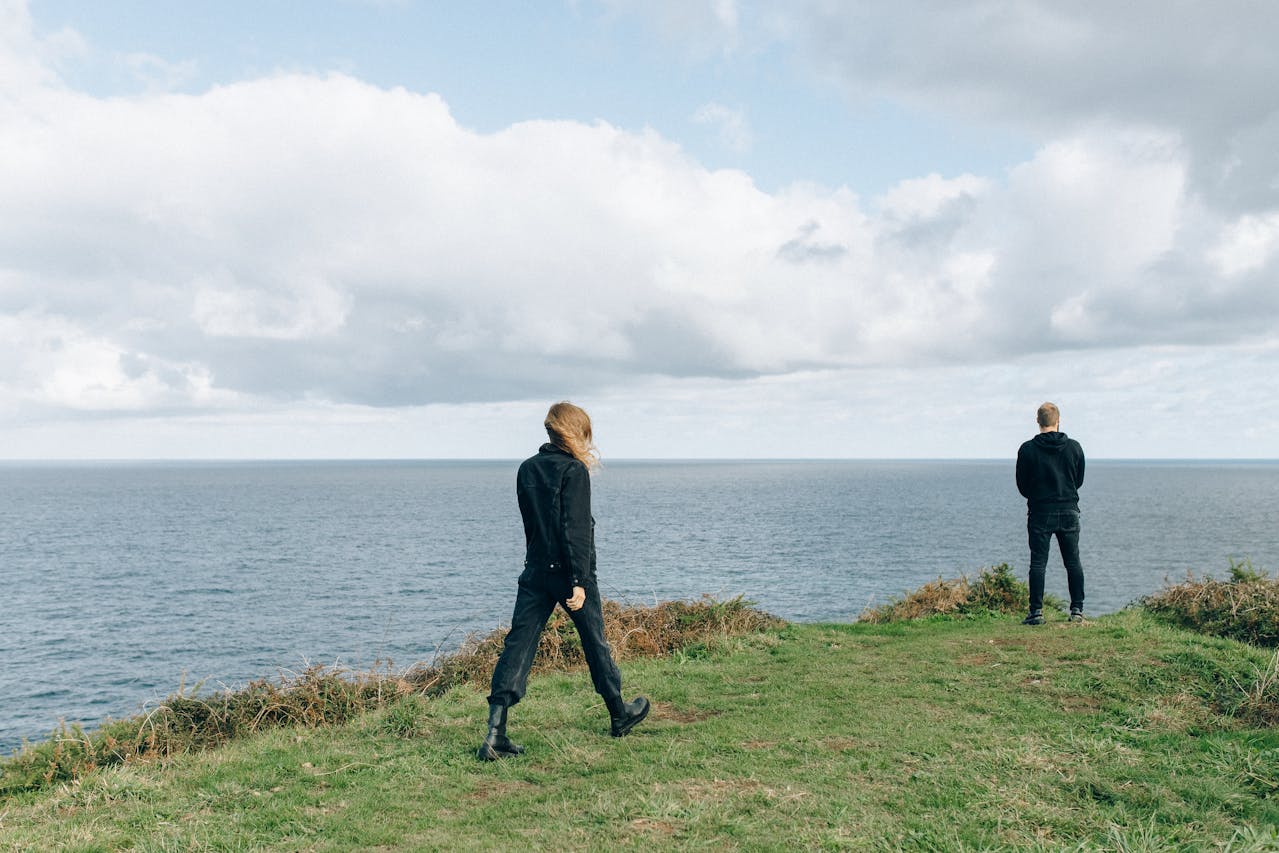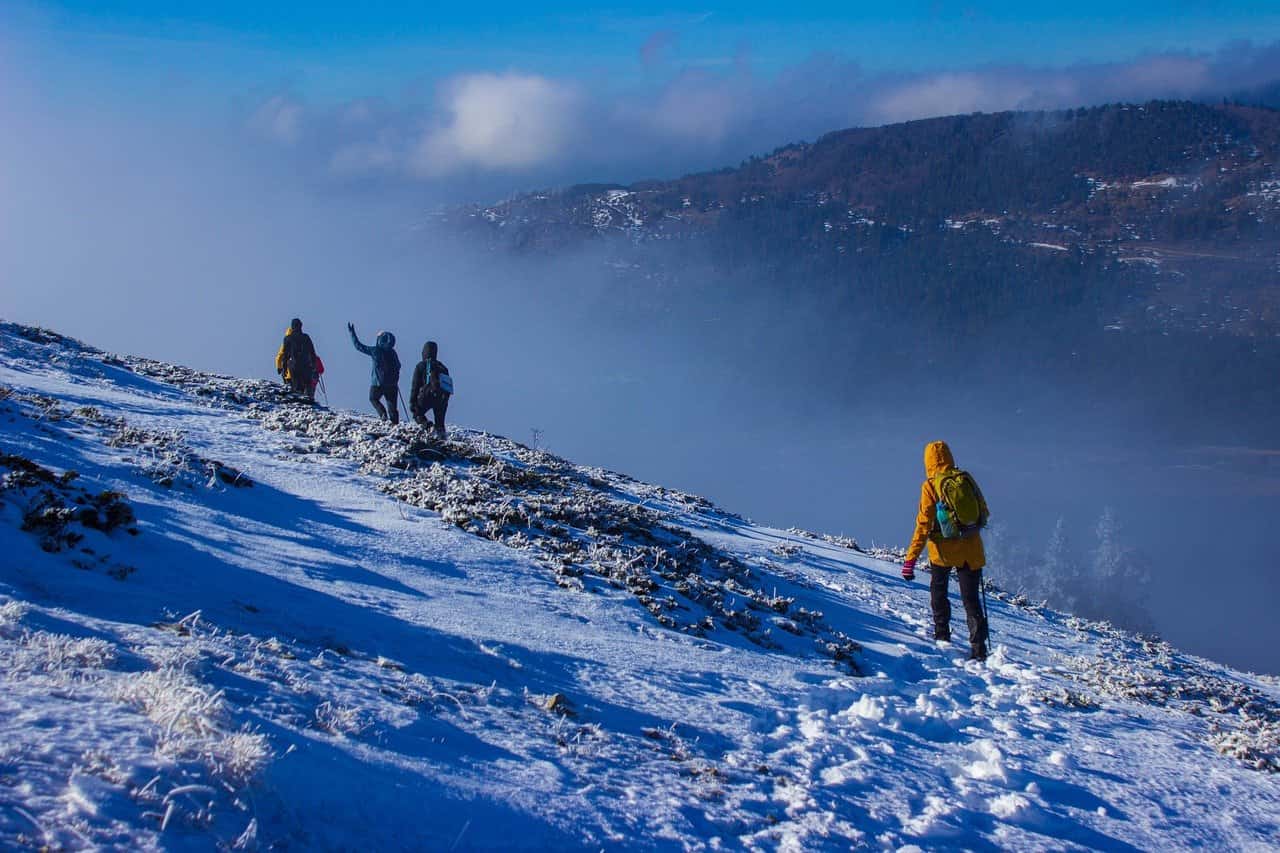When you spend time outside, you might often hear the phrase “Leave No Trace,” What does “Leave No Trace” mean? It’s a set of guidelines to help us enjoy and protect nature.
Every year, over 100 million people in the U.S. go on more than 10 billion outdoor trips. While we all love being in nature, all this activity can harm the environment. Problems like litter, damaged trails, polluted water, and even animals getting too used to humans can happen if we’re not careful. Most of us don’t mean to hurt nature, but we might not know the best ways to protect it or forget to follow important rules.
Leave No Trace is a set of seven principles created by a nonprofit group supported by Trekking Nest. These principles teach us how to take care of the environment while we enjoy it.
So, before you head out on your next adventure, learn and follow the Leave No Trace principles!
What is Leave No Trace?
Leave No Trace is a non-profit organization that teaches us how to take care of nature while we’re outdoors. They’ve created simple guidelines to help us make sure we’re not harming the environment when we hike, camp, or have fun outside. The goal is to help everyone respect and protect the wild places we love so that they stay beautiful and healthy for a long time.
The 7 principles of Leave No Trace are a set of easy-to-follow tips that guide us to make smart choices when we’re outside. By following these principles, we can keep our natural spaces clean and safe for future generations to enjoy.
Leave No Trace isn’t about making strict rules for what we can or can’t do outside. Instead, it’s about giving us the freedom to enjoy nature without damaging it. If everyone takes care of the places they visit by picking up trash, staying on trails, and being mindful of their actions, we won’t need many rules. But if we don’t take care of our outdoor spaces, they can get damaged and closed off, and new rules will be enforced.
Why is Leave No Trace Important?
Many natural places, like local trails, National Parks, and public beaches, are seeing way more visitors than they used to. During the pandemic, people turned to nature for comfort and safe activities, leading to a huge increase in outdoor participation In 2023, over 175.8 million Americans, more than half the population, enjoyed at least one outdoor activity. This meant that many natural areas saw more visitors than ever before.
For example, visits to Acadia National Park in Maine more than four million recreational visits each year, making it one of the most-visited national parks in the United States. In Zion National Park, people sometimes had to wait four hours just to start hiking a trail. Because of this, several National Parks, like Rocky Mountain, Yosemite, Glacier, and Arches, had to start new systems to limit the number of visitors to prevent overcrowding.
It’s natural for us to want to explore and enjoy the beauty of nature, but these places are more than just fun spots to visit—they provide important services for the environment and hold great historical and cultural value. The Leave No Trace principles are crucial because they help us protect these spaces. By following these guidelines, we can minimize our impact and ensure that we don’t leave any traces behind, keeping these places pristine and healthy for everyone to enjoy now and in the future.
The Leave No Trace Seven Principles
- Plan and prepare.
- Travel and camp on durable surfaces.
- Dispose of waste properly.
- Leave what you find.
- Minimize campfire impacts (be careful with fire).
- Respect wildlife.
- Be considerate of other visitors.
Plan and Prepare
Planning your outdoor adventure is key to enjoying it and making sure you leave no trace behind. If you don’t plan well, you might accidentally harm the environment. For example, if you get caught in the rain without proper gear, you might have to build a shelter from natural materials, which can damage the landscape. But if you had packed a rain jacket or a tent cover, you wouldn’t need to do that.
When planning your trip, think about everyone’s skill level, the gear you’ll need, and how to handle different situations. Learn about the area you’re visiting so you can prepare for the weather, terrain, and any potential dangers.
Also, plan your meals carefully. Bring the right amount of food for the people on your trip to avoid leaving leftovers behind. Check if there are any fire bans or special rules for cooking. If there’s a fire ban and you didn’t know, you might only have packed food that needs to be cooked over a campfire. Instead, try to bring food that can be cooked on a portable stove, which is safer and leaves less waste.
Travel and Camp on Durable Surfaces
When you’re out in nature, it’s important to protect the land and water by minimizing damage. Stick to the trails to avoid trampling plants and causing erosion. Trails might have some impact, but they concentrate foot traffic in one area, preventing wider damage. Don’t take shortcuts or walk off the trail, even if it’s muddy; wearing good hiking boots can help keep your feet dry.
In areas without trails, like the backcountry, think about the surfaces you’re walking on. Choose durable surfaces like rock, sand, or gravel, and avoid walking on fragile vegetation or wet areas. If you must walk through plants, choose dry grasses or sparsely covered areas where you can step between plants. In places with living soil, like deserts, be extra careful. These soils are fragile and support tiny species. When walking on living soil, travel in a straight line and only do so if absolutely necessary.
When setting up camp, look for durable surfaces. A good campsite should already be there—you shouldn’t have to create one. In popular areas, choose a spot that’s already been used to prevent further damage. In remote areas, spread out your tents and gear to avoid concentrating your impact in one place. Try not to stay in one spot for too long, and walk a different path each time you go to get water to avoid creating a trail.
Dispose of Waste Properly
Leaving nothing behind is one of the most important Leave No Trace principles. Pack out all trash, including food scraps like peels and cores. Even though they’re biodegradable, they can attract animals or disrupt the ecosystem. When cleaning up, look for tiny pieces of trash or food and carry wastewater from washing dishes at least 200 feet away from camp. Use biodegradable soap sparingly and spread contaminated water over a large area.
For human waste, follow the rules of the area you’re in. If there are no facilities, walk 200 feet from campsites, trails, and water sources to dig a small hole and bury solid waste. Use toilet paper sparingly and bury it or pack it out. In some places, like river canyons, you’ll need to pack out all waste. The same goes for your pets—pick up after them and keep them on a leash to prevent them from wandering off and leaving waste behind.
Leave What You Find
Remember the saying, “Take only pictures, leave only footprints.” When you’re outdoors, resist the urge to take things like pinecones, rocks, or flowers. Removing these can disrupt habitats and spoil the experience for others. It’s also illegal to take cultural artifacts from public lands. Appreciate nature as it is and capture memories with photos or drawings.
Don’t disturb wildlife by moving or taking plants and animals. Avoid damaging trees by not hammering nails, cutting boughs, or carving into bark. When setting up camp, use existing fire pits and avoid altering the landscape. If you do need to clear an area, return it to its natural state when you leave.
Minimize Campfire Impacts
Campfires can be fun, but they can also be very destructive. Most wildfires are caused by humans, often from unattended or poorly managed campfires. Only build a fire if it’s safe and necessary, and if someone in your group knows how to do it responsibly.
Before building a fire, check the regulations for the area and make sure there’s enough wood to use without harming the environment. Use existing fire rings, and if you have to build one, do it carefully. Only use dead and downed wood, and never strip wood from standing trees. Let the fire burn down completely to white ash, then extinguish it with water and scatter the cold ashes.
Better yet, use a camp stove instead of a campfire. Camp stoves are safe, leave no trace, and are great for cooking in the backcountry. If you use a stove, make sure to bring the right fuel and pack out any empty canisters.
Respect Wildlife
When you’re in nature, remember that you’re a guest in the home of other species. The Leave No Trace principles remind us to respect wildlife and their habitats.
Avoid feeding, following, or scaring animals. While it’s exciting to see wildlife, keep your distance and be as quiet and unobtrusive as possible. Feeding animals can change their natural behavior and make them dependent on humans, which is bad for them. Store your food and trash securely so animals can’t get to it.
Water is vital to wildlife, so camp at least 200 feet away from water sources to avoid scaring animals away from their drinking spots. If water is scarce, consider not swimming to avoid polluting it or disturbing animals.
If you come across an injured animal, don’t try to help it yourself. Contact a park ranger or wildlife expert instead. Also, keep your pets under control or leave them at home if they can’t be kept from disturbing wildlife.
Be Considerate of Others
People go outdoors to enjoy the peace and beauty of nature. Be mindful of others by keeping noise to a minimum, especially loud music, and by controlling your pets. Stick to Leave No Trace principles to ensure everyone can enjoy the area.
Follow trail etiquette, too. Generally, uphill hikers have the right of way, but be polite and announce your presence when passing others, especially if you’re on a bike or horseback.
Remember, everyone is out there to enjoy nature, and no one’s experience is more important than anyone else’s.









